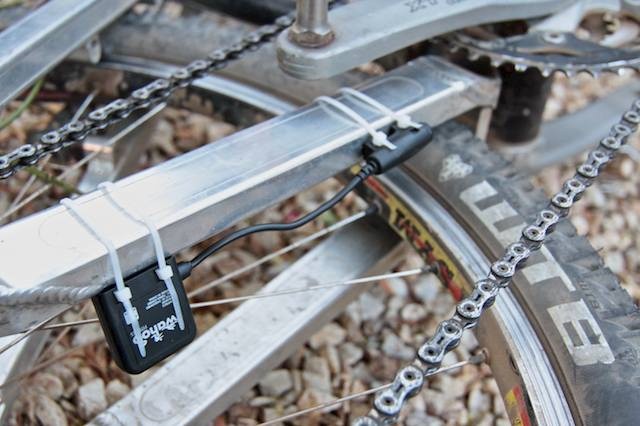Till January of this year, the Wahoo Key for iPhone ($80) dongle pwned fitness on the iPhone. Why? Because the tiny, ubiquitous dongle gives the iPhone access to dozens of ANT+ sensors, and more fitness apps than any other system — turning your iPhone into a fitness-tracking powerhouse.
Then in January, Wahoo one-upped itself and introduced the Wahoo Blue Bluetooth heart-rate strap, which completely bypasses ANT+ and instead communicates via low-energy Bluetooth v4.0. Does this mean the Key is obsolete? Not by a long shot.
The Good:
Every conceivable fitness-related measurement — heart rate, bicycle pedal cadence, power output, stride, you name it — has an ANT+ sensor to measure it, and can theoretically be paired with the Key (you can also purchase a variety of ANT+ sensors directly from Wahoo, like the HR strap and bike speed/cadence sensor we tested here). But the Wahoo Key is not only exemplary because how many sensors it’s compatible with — it also shares its collected data with more apps than any other system. The ever-popular Runkeepeer, and our favorite cycling app, Cyclemeter, are just two of the many apps the Key is compatible with.
Heck, even Wahoo’s own fitness app is fantastic. It’s well-designed, easy to read, comes with a wide choice of readout pages that can be selectively included and includes everything you need for a wide range of activities. About the only thing that disappoints is that the modules themselves aren’t customizable for each screen.
Range for the key is pretty good. I was able to shove my iPhone in a jacket pocket, or strap in onto my arm with an armband (Wahoo sells one that has a slot for the dongle) while still receiving signals from the speed/cadence and heart-rate sensors.
Both the Wahoo HR strap that came with the package, and an older Garmin strap that came with my well-used Forerunner 405, paired remarkably quickly and painlessly (though only one strap can be paired at a time, of course) using the key’s utility app.
For now, Wahoo’s use of Bluetooth is limited to its HR strap; everything else requires ANT+, which means the Fisica dongle is still king. For now.
The Bad:
I’m not sure why, but I actually had a little trouble getting Cyclemeter to wake up to the fact I had a heart-rate monitor attached; I’m assuming this was a fault of the app, not the hardware though.
Update: Steve Kusmer, founder of Abvio, the developer behind Cyclemeter, sent us a note suggesting that the reason I wasn’t able to get Cyclemeter to read my heart rate is because the dongle was already communicating with the Wahoo Fisica app. He’s right — I turned off the Fisica app and Cyclemeter quickly picked up my heart rate.
Dongles are easy to lose or accidentally wash after being left in a pants pocket (ahem).
Verdict:
An essential piece of kit for any even remotely serious athlete with an iPhone.
[xrr rating=90%]


![Wahoo Fitness Dongle: The Sharpest Fitness Tool In Your Shed [Review] wahoo-fisica-4](https://www.cultofmac.com/wp-content/uploads/2012/02/wahoo-fisica-4.jpg)

